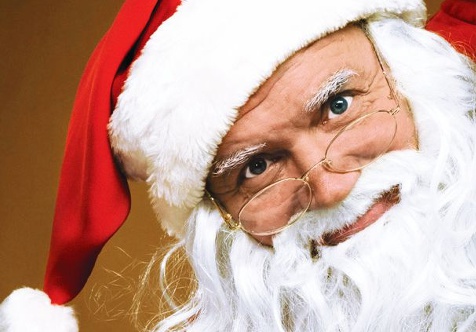In collaboration with PASSIONS, VOICE OF ASIA is proud to present timeless articles from the archives, reproduced digitally for your reading pleasure. Originally published in PASSIONS Volume 45 in 2011, we present this Christmas story, featuring then-Ambassadors and then-High Commissioners to Malaysia, about how they celebrate the holiday and what it means to them.
This Christmas, PASSIONS takes you around the world and shows you Christmas as seen from the eyes and felt from the hearts of 17 distinguished ambassadors, each proudly showcasing what makes Christmas…, well Christmas, in their country. And why, although separated by continents and countries, languages and culture, the celebration of Christmas is a truly universal one.
Personalising Traditions | H.E. Paul W. Jones, Ambassador of the United States of America
“After all the preparations – shopping for presents, preparing the festive meals and receiving guests – and the huge anticipation leading up to the event, everyone just want to enjoy themselves on Christmas.”
Although Christmas celebrations in the United States of America may be the most well-known in the world – owing to the reach of the American media – there is no one central American Christmas tradition, as the celebrations differ owing to the diverse heritage of the people there. However, as H.E. Paul W. Jones – the Ambassador of the USA to Malaysia – explained to PASSIONS, perhaps the one tradition which binds everyone is that it is a time for togetherness.
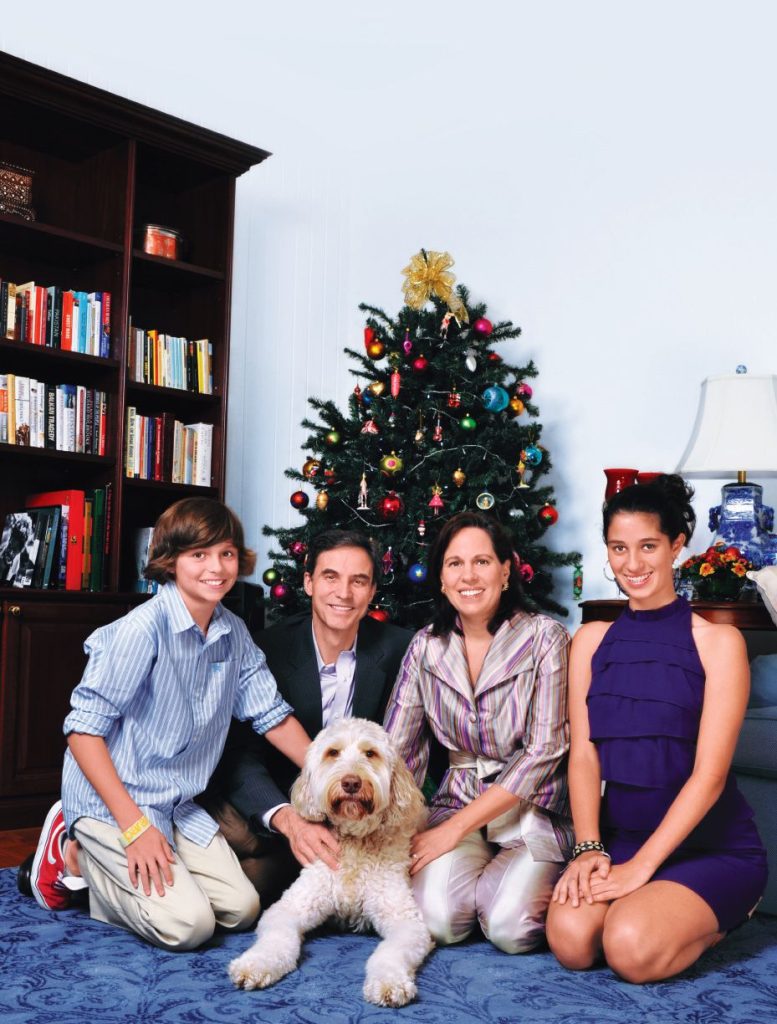
It was apt then that the Ambassador was joined by his wife Catherine and children – daughter Aleksandra and son Hale – during our interview, where he started off by saying, “For me, Christmas is about the family. In America, the Christmas spirit comes alive right after Thanksgiving, which is on the last Thursday of November, and which is also a major American holiday,” he explained.
Continuing with his description of the festive season, the Ambassador spoke of how, “decorations can be seen around neighbourhoods, and the sounds of carols will fill the air. And of course, people will start thinking about what gifts to buy. The anticipation – especially from the children – is what makes this season come alive.”
Like most American families, Christmas for the Joneses start with the traditional Christmas Eve dinner, which will usually comprise turkey, roast beef and ham. In their household, these festive staples are complemented by special dishes that reflect their family’s heritage.
“My ancestry is British,” Ambassador Jones explained, “while Catherine’s is German-Russian, so we take a bit from both sides, and that’s what makes Christmas special in my family. My mother, for instance, always makes a special Christmas pudding and cake, which is very English, and Catherine will add some treats of her own.”
An award-winning food and health author, Catherine Jones, is also – according to Ambassador Jones – no slouch in the kitchen herself. “Catherine follows in the footsteps of her Russian mother, who herself is a fabulous cook,” he said. “So for Christmas, she (Catherine) will come up with her own Christmas cookies. She bakes them and gets the kids to decorate them with sweet toppings. She also makes the best peppermint ice cream!” he exclaimed with a nod of acknowledgement at his wife.
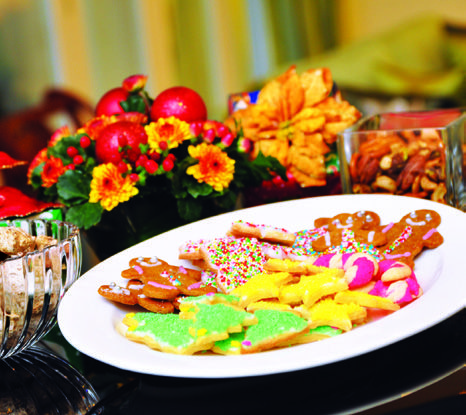
After dinner, the Christmas tree is decorated while festive tunes play in the background. One tradition for the family is to gather round the fireplace while Ambassador Jones reads a classic Christmas poem or story. This, according to Catherine, was influenced by her childhood. “My fondest memories of Christmas when I was younger, was of my father reading A Visit from St Nicholas by Clement Moore. That’s why we decided to incorporate that tradition into our family,” she said.
Soon it would be time for bed, but before heading off to it, the children would each hang a stocking with their names on it at the fireplace, in anticipation of Santa Claus. “They will also leave treats such as chocolate cookies and milk for Santa Claus, as well as carrots and apples for his reindeers,” Ambassador Jones said.
“On Christmas morning, the kids will be the first ones awake, and they will rush to check their stockings which would have been filled with sweets and other tidbits. Once everyone else is awake, we will go to the living room, where there will be presents under the tree. However, before we open the gifts, we would have brunch. Only after that, we sit down at the tree and unwrap our presents,” he explained.
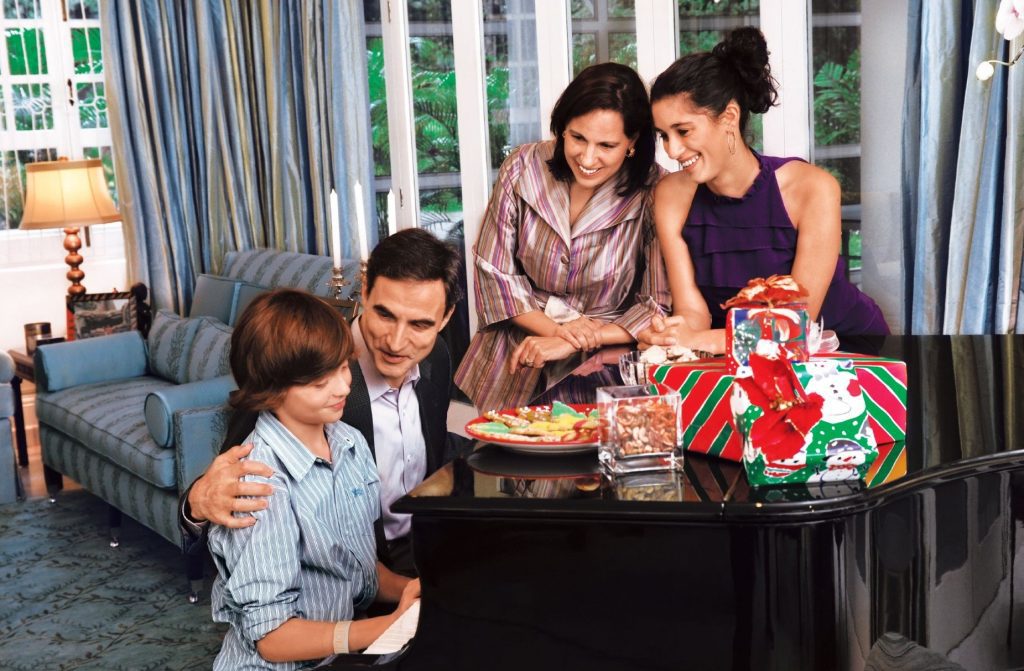
Interestingly enough, Ambassador Jones believes that Christmas day is also a great time for relaxation. “After all the preparations – shopping for presents, preparing the festive meals and receiving guests – and the huge anticipation leading up to the event, everyone just want to enjoy themselves on Christmas,” Ambassador Jones concluded with a laugh.
Cherished Childhood Memories | H.E. Andrea Wicke, Ambassador of Austria
Christmas for H.E. Andrea Wicke – Ambassador of Austria to Malaysia – brings back memories of a more organic and intimate festive celebration. She fondly recalls days of her childhood in her home country when electricity was sparse. The longer cold nights were mostly illuminated by the crisp white snow, the sounds of children carolling from a distance, the fragrant scent from pine trees, family gatherings to make tree ornaments and home-baked Vanillakipferl (a traditional Austrian Christmas cookie).
“During my childhood, there were far less lights except for the main street. In those days, a glimpse of a faintly lit Christmas tree behind a window was enough to bring out the cosy feeling of the season for anyone,” she reminisces. “Nowadays, Christmas decorations can be seen in abundance, lighting up residential areas and public places. With more energy at our disposal, there is also less silence and more noise with Christmas carols bombarding you in shops everywhere. That was not the case when I was a child; we sang more than we listened then.”
Much to her delight, some of the customs for the season still remain relevant and are widely observed in Austria today, particularly one pertaining to the tree. There, the tree is known as Christbaum, the ‘Christ tree’ and not Weihnachtsbaum, the ‘Christmas tree’. Unlike the North American, British and Australian tradition of setting up and decorating the tree days ahead, it is an Austrian custom to set up the tree on Christmas Eve. “Nobody would privately put up a tree before the Eve, and everybody remove it on the 6th of January which is the day of the three Magi, marking the official end of the Christmas holidays”, Ambassador Wicke clarifies.
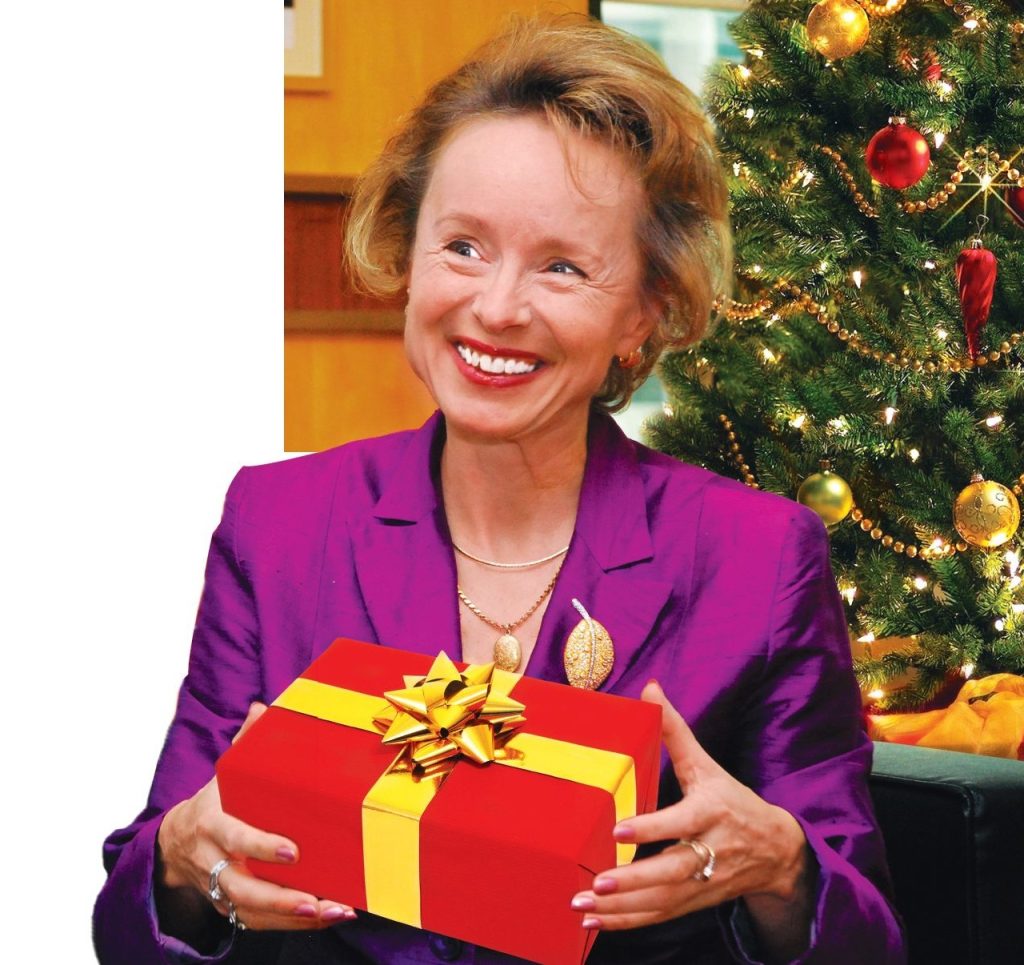
Even with the availability of plastic trees these days, most Austrian households still prefer fresh pine trees and so they are grown commercially for this purpose. Decorating the tree is also a very important family affair as the Austrian tree ornaments are almost entirely adorned with home-produced crafts.
During the weeks leading up to Christmas, children would assist their parents with making stars and rings out of straw, herbs and spices to be hung on the tree. There are also a lot of edibles adorning the trees – ornaments made from chocolates, nuts and apples, as well as home-baked gingerbread cookie figurines. Not surprisingly, decorating the tree herself with homemade ornaments is what Ambassador Wicke still finds great joy in the most and looks forward to each Christmas.
One of the most cherished moments of Christmas celebration for Ambassador Wicke is the ceremony on the 24th of December. She explains that in German-speaking countries, the Eve carries greater significance than the actual Christmas day itself. “For us, ‘Christmas’ always means the 24th as this was the day when the tree is put and lit for the first time, and most importantly for the kids, presents are given,” explains Ambassador Wicke.
“When we were children, our relatives would come by and we will go out together while our parents stayed behind to secretly set up the tree. At dusk, we will come back and our parents will ring a small bell which told us that we could come in. When we enter the house, the place will be lit only by candles on the tree. My father will read us the story of Christ’s birth, followed by us singing Christmas carols and only then were we allowed to open the presents under the tree,” she says. “After that, we had our dinner and servings of my mother’s Vanillakipferl.”
A Season of Togetherness | H..E. Randolph Mank, High Commissioner of Canada
“We men had volunteered to stuff the turkey. So we were struggling with this huge bird, and the women were all laughing at our efforts. Eventually, the whole effort was moved from the kitchen to the den where we had the fireplace, and it was something that brought us all together.”
Growing up in the township of New Dundee in the rural countryside of Ontario province, meant that the most endearing memory of Christmas for Canadian High Commissioner, HE Randolph Mank, were the Christmas lights against a white backdrop during winter nights. “The sky turns dark early during winter, there are waves of white snow in the background and the trees are all glittering with snow flakes. So you have a stickman army on a white background and against all that are the Christmas lights decorating the cottages in the night,” he said.
Accompanying that great vista were the smells of Christmas wafting from the kitchen, such as the aroma of onion and safe stuffing, mince tarts and pies. Reminiscing about his childhood, the High Commissioner recalled the simplicity of life back then. “I will always remember that heavy, old fashioned iron stove we had, which had a furnace that we would feed wood into,” he told PASSIONS.
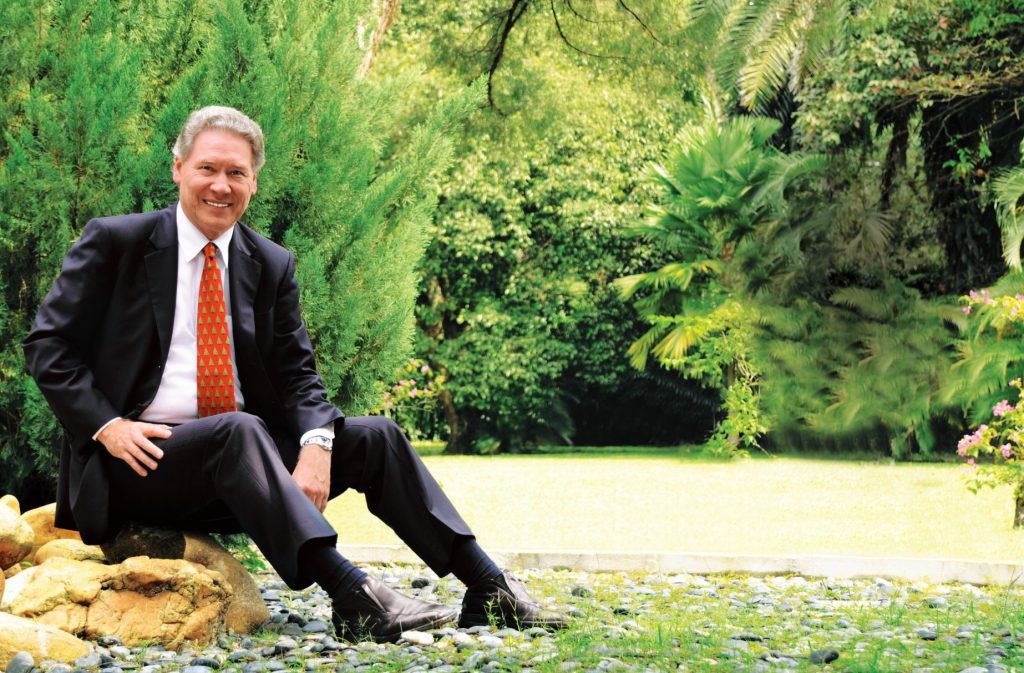
For him, although some things may have changed, there are some traditions that remain the same. Even in Malaysia, far away from his native Canada, Christmas is very much a time of togetherness. “A few years back, we had some friends from the diplomatic corps over for Christmas,” he revealed. “We men had volunteered to stuff the turkey. So we were struggling with this huge bird, and the women were all laughing at our efforts. Eventually, the whole effort was moved from the kitchen to the den where we had the fireplace, and it was something that brought us all together,” he smiled.
Of course there are some things that High Commissioner Mank used to do back home, which he is unable to do in his present posting. One such tradition is his family’s Boxing Day picnic, where they would spend the day after Christmas outdoors, despite the infamously cold Canadian winter.
“We’d take a huge thermos of steaming hot turkey soup, which was made from the leftovers of the Christmas turkey, and then go tobogganing down the slopes, while the thermostat would show that it was -10 centigrade. People may think we’re crazy, but we enjoyed it,” he laughed.
Although winter sports may be out of the equation, one practise which he has managed to take along is baking apple pies during Christmas. Still, as he noted, Christmas in Canada has changed owing to the large influx of immigrants from around the world. “It is not rare to see households with different traditions of celebrating Christmas. But that’s not a bad thing because they only help make Canada so much more richer in culture and we get to celebrate more,” he asserted.
Christmas Comes but Twice a Year | H.E. Lyudmila Vorobyeva, Ambassador of the Russian Federation
“In the weeks before Christmas, we will fast and refrain from eating dairy products, meat and eggs, and only take water, fruits and vegetables.”
For most of the world, Christmas is a once-a-year occasion which falls on the 25th of December. However in Russia, the decision by the Orthodox Church to retain the Julian rather than the Gregorian calendar means that people such as H.E. Lyudmila Vorobyeva – the Ambassador of the Russian Federation – mark the birth of Jesus 13 days later on the 7th of January.
Not that anyone is complaining, after all – as Ambassador Vorobyeva pointed out, “Our official state calendar is the same as the rest of the world. So we get to celebrate Christmas twice a year!” she laughed. And it’s not just Christmas, because as the Ambassador pointed out in amusement, the Orthodox New Year takes place on the 14th of January. “Thus some people have taken to calling the 1st of January, the old new year,” she quipped.
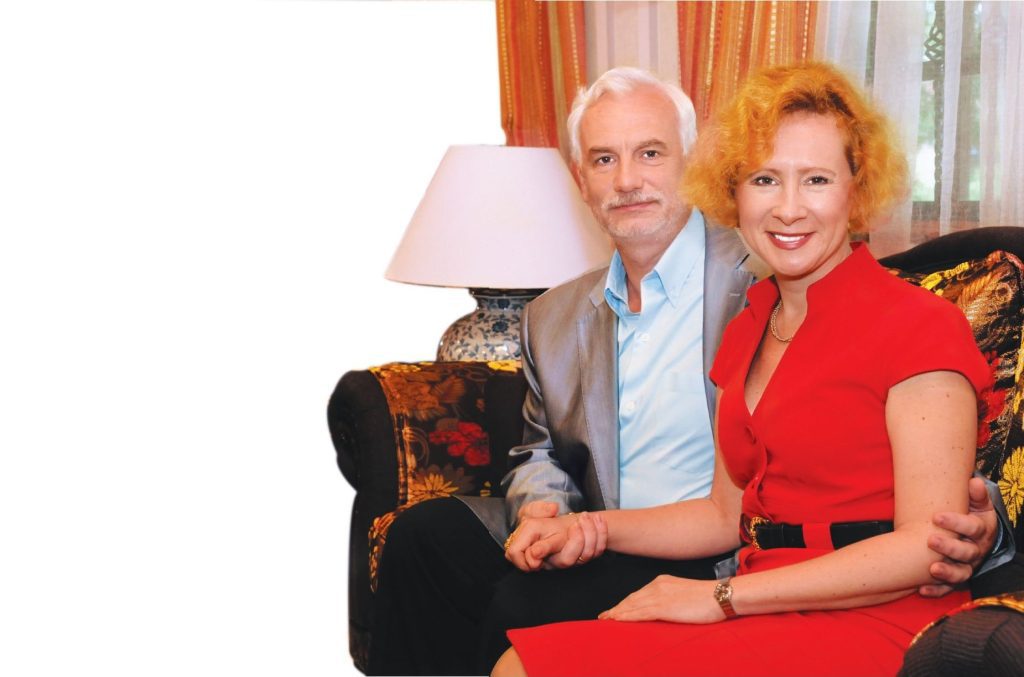
Incidentally, as the Ambassador explained, the observation of Christmas in Russia has changed much since the fall of Communism. “During the Soviet era, people were discouraged from celebrating Christmas, and more emphasis was placed on the New Year,” she said. “However, I’ve noted that more and more people are becoming religious again, and they go for midnight Mass during Christmas Eve, on the 6th of January,” she clarified.
Interestingly, another way that the Orthodox Christmas differs is how the season of Advent – which leads up to Christmas day itself – is a time for fasting and abstinence. “In the weeks before Christmas, we will fast and refrain from eating dairy products, meat and eggs, and only take water, fruits and vegetables,” the Ambassador revealed. “Of course, when it is Christmas, we feast!” she concluded with a smile.
Despite these differences, Ambassador Vorobyeva said that in many ways, the Russian Christmas is celebrated in a similar manner to other countries. “We also have a family meal on Christmas Eve. There’s also a gift-giving figure like Santa Claus in the other European countries. We call him “Grandfather or Father Frost (Ded Moroz), and he has a grand-daughter – the Snow Maiden (Snegurochka). And we also have Christmas trees, which was a tradition that Tsar Peter the Great brought back from his travels in Europe”.
And as always, there is family, and this coming Christmas (the one on the 7th of January) is one that Ambassador Vorobyeva is especially looking forward to. As she happily told PASSIONS, “My daughter, who is studying in Moscow, will be flying down with my mother and they will be spending Christmas and New Year with my husband and I in January.”
A Roman Holiday | H.E. Folco de Luca Gabrielli, Ambassador of Italy
“Christmas with your family, Easter with whomever you like!” In many ways, it is like how people celebrate Chinese New Year and Hari Raya here, where you make a trip to your parents’ home to celebrate with them.”
For H.E. Folco de Luca Gabrielli – the Ambassador of Italy – Christmas will always be associated with the sights, sounds and smells of his childhood in Rome. “I recall the sound of the zampognari – the bagpipe-playing shepherds as they bring their herd back from the hills for Christmas, and the smell of roasting chestnuts from the street vendors, and the sight of Christmas fairs held in the city squares,” he reminisced.
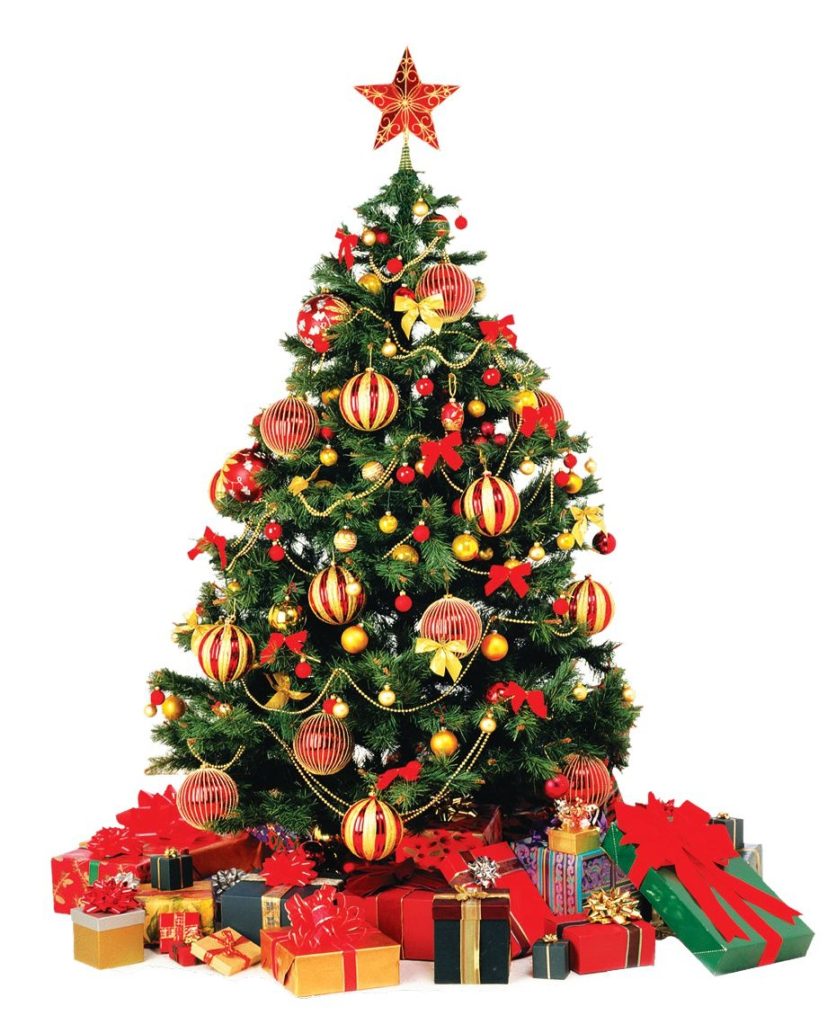
The Ambassador is proud that his homeland had also contributed to a Christmas tradition – namely the Nativity scene. As he told PASSIONS, “Saint Francis of Assisi first came up the crèche, the pesepre, to teach the ordinary people about the birth of Jesus.”
Apart from the Nativity scene, another Italian Christmas tradition is the Christmas Fair, which according to Ambassador Gabrielli are, “Huge outdoor markets which sell gifts, Christmas supplies and needs. One of the biggest in Rome can be found in the Piazza Navona, and like every other market, there will be a pesepre set up in the centre.”
On the eve of Christmas, the dinner is – as the Ambassador pointed out – a light and meatless affair. “We have fish such as capitone (roasted eel) and other seafood dishes, as well as pasta, vegetables and lentils.” After dinner, it is customary to attend church service before retiring for the night.
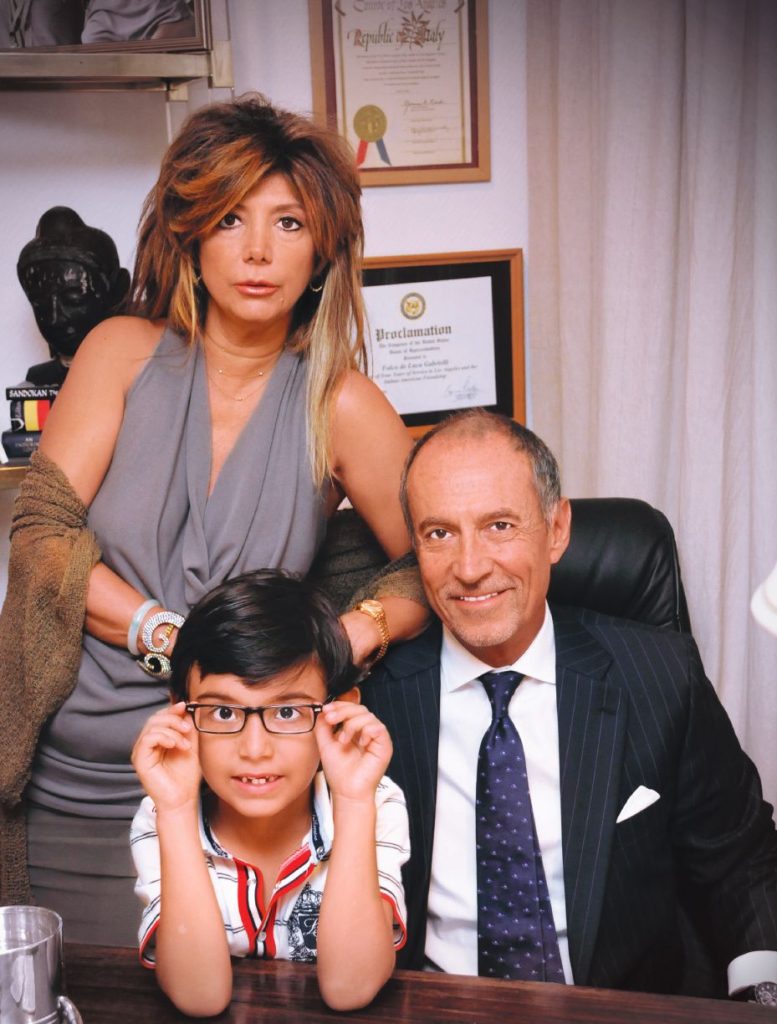
The real party, it would seem takes place the next day for Christmas lunch. “For the meal, we’d have capone (chicken), various types of hams and meats, as well as tortellini, ravioli, and salads, along with a lot of sweets. And of course panettone, and wine and drinks,” said Ambassador Gabrielli.
While most people may have heard of Father Christmas or Father Frost, Italy has La Befana, the old woman who goes around on the 6th of January – which is also the last day of Christmas – to give gifts to children. ”Good children will get gifts, and naughty ones will get coal!” he laughed with a mock ominous glance at his young son Brando, who was present during the interview. “Oh well, it is sugar these days, but the meaning is the same,” he clarified.
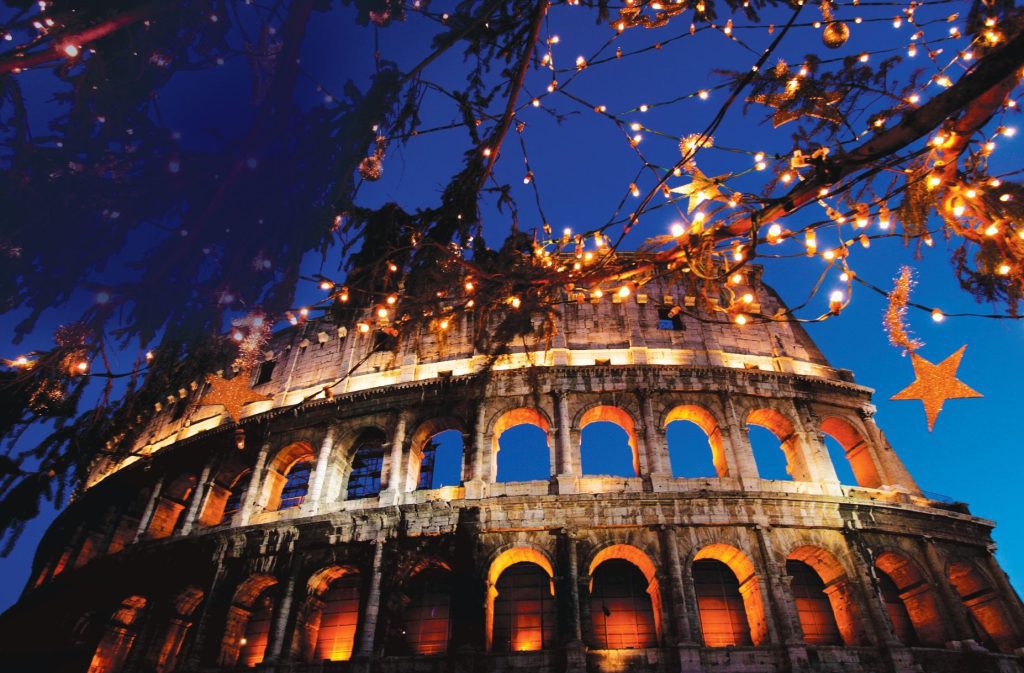
For Ambassador Gabrielli, Christmas will always be about family. Speaking in Italian, he said “Natale con i tuoi, Pasqua con chi vuoi – Christmas with your family, Easter with whomever you like!” In many ways, it is like how people celebrate Chinese New Year and Hari Raya here, where you make a trip to your parents home to celebrate with them.” Ending the interview, the Ambassador explained that although his parents have not been around for some time, his brother and his family will be travelling to Malaysia to celebrate Christmas together.
Teutonic Traditions | H.E. Dr. Guenter Georg Gruber, Ambassador of Germany
“On Christmas Eve, we would set up the tree and light about 10 candles, and then lay the gifts under the tree.”
According to the Ambassador of Germany, H.E. Dr. Guenter Georg Gruber, Christmas is the most loved holiday in the German calendar and emphatically declared, “It is more than just a holiday. It is also one of our oldest religious observances.” Waxing about the traditional German Christmas, the Ambassador spoke about how the run-up to the day is family oriented and that “the entire household gathers on the first Sunday four weeks before Christmas to light the Advent candle.”
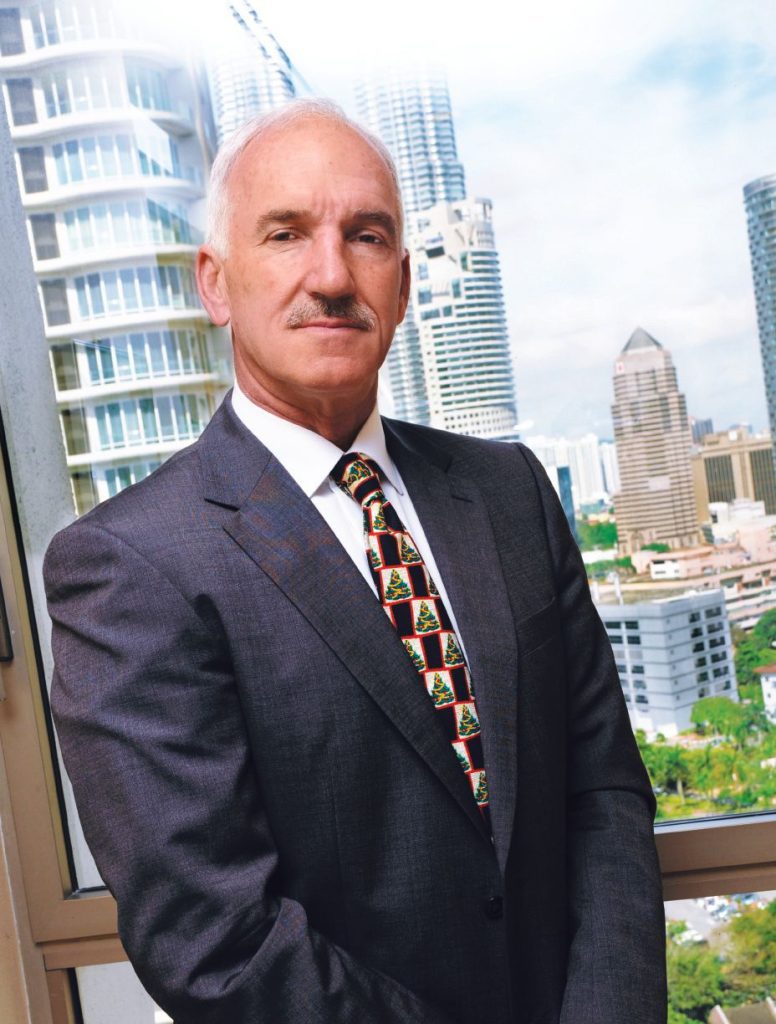
Listening to the Ambassador describe Christmas in his homeland brought to mind the images of a traditional Christmas. There is the snow, the chill, the warm drink to chase off the cold, and the overall feeling of cheer. “They have three big Christmas fairs, which are quite different from your usual commercial operations,” he said. “The biggest and most famous of which is in Nuremberg. There are stalls selling handcrafted items such as wood carvings and decorations for the tree. And if you’re cold, you can always get a glass of Glühwein (mulled wine) to keep you warm.”
On a more personal note, Ambassador Gruber reminisced about celebrating Christmas during a time when his children were younger. “On Christmas Eve, we would set up the tree and light about 10 candles, and then lay the gifts under the tree. Of course, before we begin, the children would be hustled into another room first. Then, when everything has been set up, we’d ring a bell for them to come into the room. This tradition has been in my family since before the war,” he smiled.
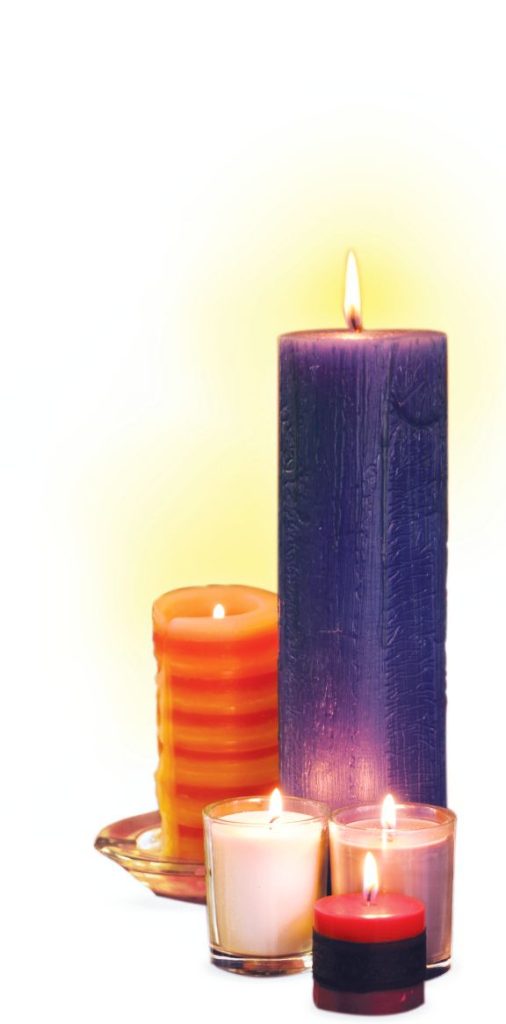
Another tradition is to sing carols before the gifts are opened. A talented flautist himself, and with his wife being a more than capable guitarist, music is a must in the Gruber household. “If we wanted to torture the children, we’d sing first then have dinner, and then only open the presents,” he joked. The Ambassador also revealed an interesting piece of trivia to PASSIONS, which is that he is distantly related to Franz Xaver Gruber – the musician who composed the melody for Stille Nacht – better known as Silent Night.
On Christmas Day itself, the most important time of the day is the Christmas lunch, which features dishes such as goose, dumplings (which are made by hand), ham, sausages and desserts such as cookies and stollen. “After such a rich meal, we need Boxing Day to help us recuperate,” the Ambassador smiled.
Ultimately, Christmas is still a religious festival in Germany, and while the Munich-born Ambassador Gruber admitted that he is not a religious person, he revealed he was brought up a Roman Catholic, and said “I do attend service, to focus on the meaning of the celebrations and not just the secular aspects.”
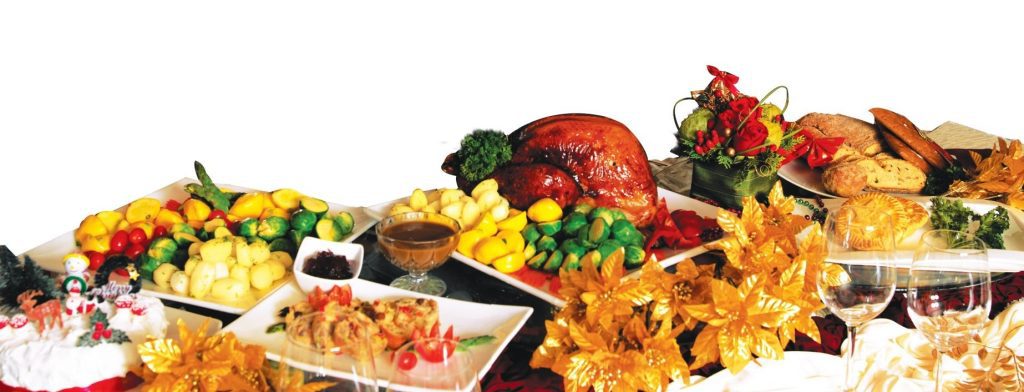
And coming from Germany, with its history of being the crossroads of Catholicism and Protestantism in Europe, Ambassador Gruber was able to see how the two different Christian traditions celebrate Christmas. “The Catholic churches and cathedrals are very richly decorated and they look a bit like heaven on Earth, whereas the Protestant ones are more sober looking. But then again, most of the most beautiful German Christmas music was composed by J.S Bach – a Protestant – so it all balances out,” he observed.
A Celebration of Peace and Harmony | H.E. Paul Bekkers, Ambassador of the Netherlands
One of the most popular images of Christmas is that of Santa Claus visiting homes and giving presents to children on the midnight of the 24th of December. For Dutch children, it starts somewhat earlier than that – as early as the 6th of December in fact, because that is the day when the people of the Netherlands celebrate the Feast Day of Sinterklaas.

“We are only one of three countries that have the custom of receiving Sinterklaas,” H.E. Paul Bekkers – the Ambassador of the Netherlands – revealed, “and the others are Belgium and Hungary.” He went on to explain that Sinterklaas is short for Sint Nicolaas, who is more commonly known as Saint Nicholas, and according to Dutch belief he travels from Spain to the Netherlands each November by steamboat, accompanied by his helpers known as Zwarte Piet, and carrying gifts for children.
“The annual Sinterklaas parade is a significant event in the Netherlands,” Ambassador Bekkers highlighted, “and it is even broadcast live on television. It starts on the 5th of December with the arrival of Sinterklaas and his Zwarte Piet assistants by boat and he will be received by the townsfolk at the dock,” he said.
Continuing with the account of the parade, the Ambassador related how Sinterklaas will then “parade through the streets on his horse while the Zwarte Piet will throw candies and small round gingerbread cookies to the crowd.” Incidentally, as Ambassador Bekkers pointed out, the popular conception of Sinterklaas in the Netherlands as an elderly bearded figure in a red bishop’s outfit is one of inspirations behind Santa Claus.
When Dutch children wake up the next day, which is the 6th of December, they will find their living rooms filled with presents, and that tells them that Sinterklaas had visited their homes while they were asleep. The Feast Day of Sinterklaas also marks another milestone in the Dutch calendar its passing usually means that people will usually start preparing for Christmas.
One interesting aspect about the Dutch Christmas which Ambassador Bekkers told us about is that of gift giving or rather the lack of it. “It’s not in our practice to exchange presents during Christmas,” he said. “Of course these days, with globalisation, some people have adopted the custom, but my family still celebrate Christmas in the traditional Dutch way.”
The traditional Dutch way, the Ambassador revealed, is to spend time with friends and family. “We would usually stay at home on the first day of Christmas, and we invite our friends and relatives to join us, and in the evening, we would have dinner which would have some special dishes such as hare and wild boar,” he said.
As someone whose faith is of great importance to him, Ambassador Bekkers also feels that Christmas is a time for personal reflection and to think of others, particularly those who are less fortunate.“I think the most crucial message of Christmas is one of peace to the world,” he said. “Christmas is a time for sharing and caring; where people from all walks of life, religious or not, are united in the spirit of harmony.”
A Time for Family | H.E. Lourdes Puma Puma, Ambassador of Ecuador
“We have traditions such as ‘the secret friend’, where colleagues give each other little presents, anonymously, and this heightens the anticipation. Also, Christmas music and carols are essential in creating the mood for the season.”
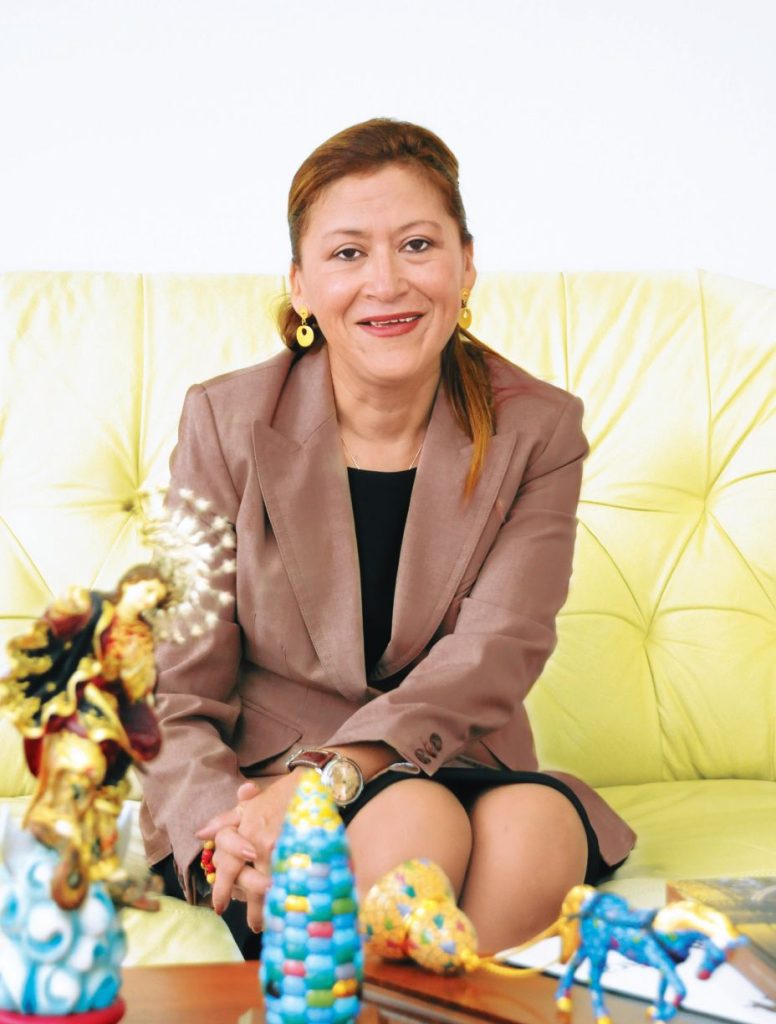
For residents of Ecuador’s capital, Quito, the Yuletide season usually starts earlier as the city’s founding anniversary falls on the 6th of December. Such was the experience of the Ambassador of Ecuador – H.E. Lourdes Puma Puma – when she was growing up, and still is when she makes her annual trip home for Christmas.
“For the whole of December until Christmas, everybody would be busy preparing for the holiday,” said the Ambassador. “We have traditions such as ‘the secret friend’, where colleagues give each other little presents, anonymously, and this heightens the anticipation. Also, Christmas music and carols are essential in creating the mood for the season.”
For the Ambassador, the centrepieces of the celebration are family and faith, and while her career as a diplomat may have taken her to other countries, she makes sure that during Christmas, she would return home to spend the holiday with her family and friends. “We have this tradition of Novena, which begins nine days before Christmas, and where we will visit the homes of relatives and friends and pray and sing carols,” she revealed.
On the ninth night – which is Christmas Eve – a procession known as the Pasos del Niño will be held. According to Ambassador Puma Puma, this is to symbolise the journey of Mary and Joseph from Nazareth to Bethlehem. Unsurprisingly, the day is packed with activities, and after the procession, gifts are exchanged and then families usually retire for an evening meal featuring both Spanish and indigenous American foods, one of which are Pristinos or Christmas fritters which the Ambassador declared to be “a must-have for Christmas Eve dinner.”
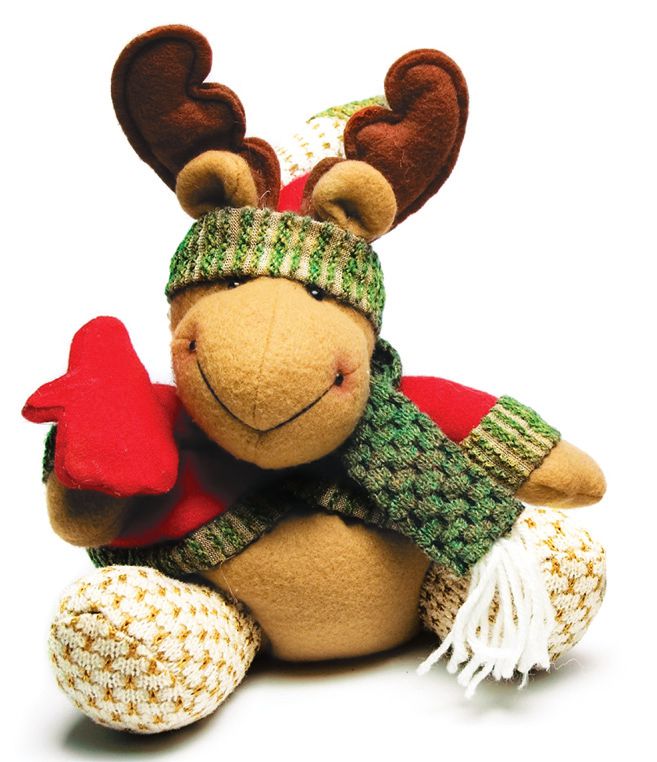
After dinner, Ambassador Puma Puma and her family will go to church for midnight Mass. One interesting point she brought up is that the figurine of baby Jesus is not placed in Nativity scenes until after midnight. “Because that was when he was born,” she explained with a smile. Then it is time for more merry-making before everyone retires in the early hours of Christmas Day.
Furthermore, as Christmas is a time for togetherness, the Ambassador makes sure friends, who do not have any family with which to celebrate, are invited to share the joy of her family. She also expressed her hope that she would be able to persuade her parents to come join her for Christmas in Malaysia. “It all depends though, because they are the ones who decide at whose house we’re going to gather for Christmas that year,” she laughed.
A Time for Spiritual Renewal | H.E. Jan Füry, Ambassador of the Czech Republic
“I still remember enjoying the sights and sounds of the forest and the river during winter. The fragrance of pine trees covered by snow and the calm environment were so spiritually uplifting, that was a time which connected the transcendental me.”
Preparations for Christmas in the Czech Republic start in late November, four Sundays before Christmas Eve. During this time, a wreath is made by fastening together several evergreen branches, and then decorated with ribbons, pinecones and other trinkets. “Four candles are placed around the wreath, with each representing one of the four weeks of the Advent,” H.E. Jan Füry, Ambassador of the Czech Republic to Malaysia, explained when talking to PASSIONS about the festive season leading up to 24th December.
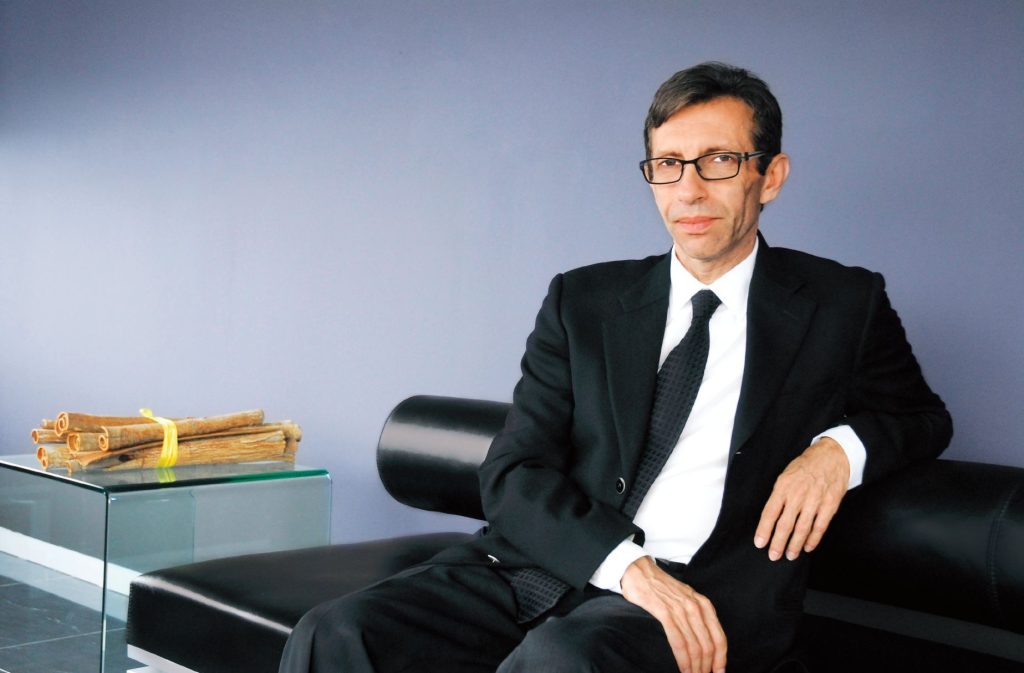
Similar to most European nations, Christmas celebrations in the Czech Republic start on the 24th of December and end on the first Sunday after the 6th of January (which commemorates the visit of the Three Kings). However, as Ambassador Füry revealed, for the Czechs, the customs on the 24th are much more meaningful and more intimate than the following days, which are reserved for friends and relatives.
“Christmas Eve is called Štêdrý den in Czech, which means ‘Generous Day’, and it is the most enjoyable day of Christmas holidays,” he said. Painting a picture of it with his words, the Ambassador related to us how families gather at home to decorate the Christmas tree, as well as to prepare gifts and dinner.
“When the first star emerges in the night sky, relatives and friends are invited to join the traditional Christmas Eve dinner,” Ambassador Füry told us. “There is fish soup and the main course is fried carp with potato salad. It is also considered unlucky to get up from the table before everyone is finished and the table is always set for an even number of guests. After dinner, presents are exchanged, and people will sing Christmas carols with only candles providing light.”
While the aforementioned may resemble the celebrations in many other countries, one interesting aspect about Christmas in the Czech Republic is that fortunes are told after the Christmas Eve dinner. Finally at midnight, comes the spiritual part when people will attend Mass – known as “Pasterka” – in church.
While for most people, Christmas is mainly a time of happiness and family gatherings, Ambassador Füry remembers Christmas as a time of personal spiritual renewal, “When I was a child, I lived in the countryside and I would wander into the forest nearby during this time of the year. I’m a country boy and I still remember enjoying the sights and sounds of the forest and the river during winter. The fragrance of pine trees covered by snow and the calm environment were so spiritually uplifting, that was a time which connected the transcendental me”.
A Festival for Feasting | H.E. Adam W. Jelonek, Ambassador of Poland
In Poland, the preparations for Christmas start with a fast that begins at the midnight of the 24th of December, and which lasts until the traditional Christmas Eve supper. The sign that it is time for supper is when the first star appears in the night sky, at which point, people will break a wafer (known as an oplatek) in half and make a wish. They would then exchange the broken half with each other, to signify a hope that both their wishes would come true.
This is just one of the many unique traditions of a Polish Christmas which H.E. Adam W. Jelonek – the Ambassador of Poland to Malaysia – shared with PASSIONS when we met him. The other one is the aforementioned Christmas Eve supper, where families gather around the dinner table to break their fast.
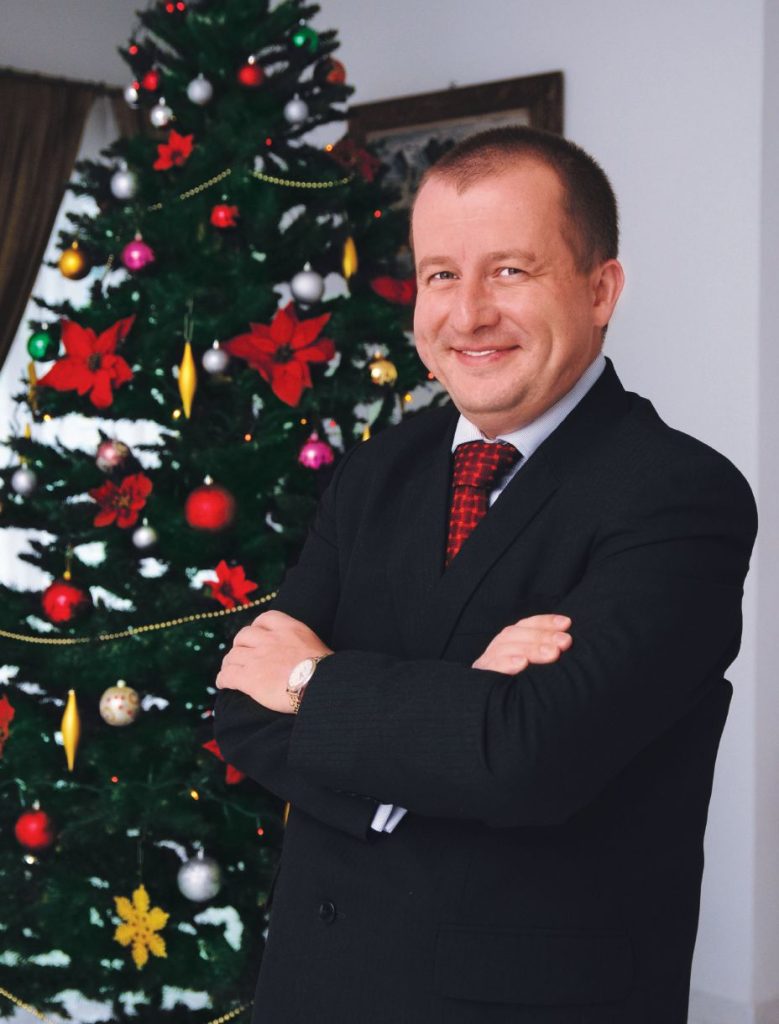
“Even the poorest of families would have the supper,” Ambassador Jelonek revealed, “and some people even save up for the entire year just for this occasion. During supper, there will always be 12 dishes to signify the 12 Apostles of Christ, and except for one fish dish, there are no meat dishes at all. Instead, we will have traditional food like borscht – a vegetable soup made with red beets – dumplings stuffed with mushrooms and cabbage, Polish herring roe with onions, and traditional cookies for dessert.”
However, it is not all about food. There is also music – namely Polish Christmas songs known as kolendy, which would be sung during supper. “Our songs have a very long tradition, and some of them are from as far back as the 14th century,” the Ambassador explained. “After supper, the children will unwrap their presents, and most people will attend Midnight Mass at church, even those who do not normally do so,” he said.
On the following day, most Poles would mark the first day of Christmas with a breakfast of cold dishes, which – unlike the Christmas Eve supper – includes meat. However, as the Ambassador explained, the breakfast is not a usual meal.
“We start eating at around 12 noon, and we usually don’t finish until 5 pm, because we will take our time and eat at a leisurely pace,” he said with a smile, before going on to elaborate that breakfast is the only meal of the day because, traditionally, work is not done during the first day of Christmas, while people will visit their extended family on the second day.
When asked what Christmas means to him, Ambassador Jelonek paused for thought before saying, “Christmas is about giving and about togetherness. In Poland, we have practise, where we put an extra plate and place at the table during Christmas Eve supper, so that if someone wants to join us for supper, they can.”
While the act is more symbolic than anything, there are times when people celebrate Christmas away from their families, and so the companionship of others at supper – even if they were strangers – is welcomed.
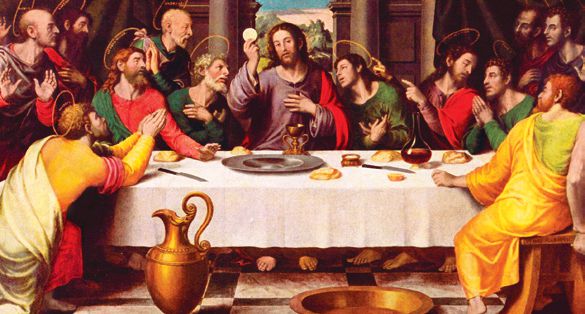
Speaking from experience, Ambassador Jelonek said, “Last year was my first year in Malaysia, and I didn’t have my wife and children with me. So for Christmas Eve supper, I invited several families from the Polish community in Malaysia to join me. Of course, this year my wife and children will be coming over. But I am happy that I could celebrate Christmas in Malaysia with my fellow countrymen, because Christmas should never be celebrated alone.”
The Birthplace of the Christmas Feast | H.E. Jorge Alberto Lozoya, Ambassador of Mexico
“Children will learn a traditional song which is the pedir posada, and they will all want to play the parts of Joseph and Mary when they re-enact the scene where the Holy Family ask the innkeeper for room.”
While some may think that Mexico – owing to it being a predominantly Catholic, Spanish-speaking country – celebrate Christmas in the same way as other Latin American nations, its Ambassador to Malaysia – H.E. Jorge Alberto Lozoya, begs to differ. Speaking to PASSIONS, he revealed some aspects of the Mexican Christmas which make it unique.
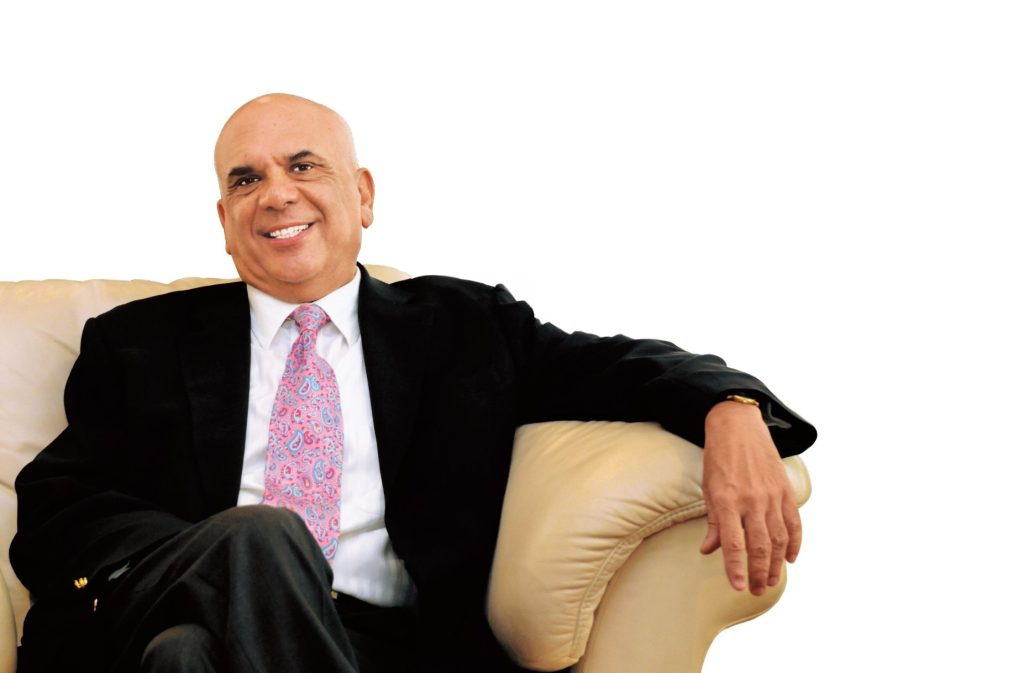
“Our Nativity scene for example is one thing that really stands out,” the Ambassador said. “Although it is very common for homes and churches in Catholic countries to have one, ours is different because we add plants such as agaves, and also animal figurines. So it looks like Jesus was born in a little Mexican ranch,” he chuckled.
Just like their Nativity scenes, the nine days preceding Christmas have also been infused with a dash of Mexican flavour. Known as the Novena, it is commonly observed in Catholic countries to commemorate the Virgin Mary’s nine months of pregnancy. “We have the same tradition in Mexico,” Ambassador Lozoya explained, “but we call it Las Posadas. And in Mexico, the children will learn a traditional song which is the pedir posada, and they will all want to play the parts of Joseph and Mary when they re-enact the scene where the Holy Family ask the innkeeper for room.”
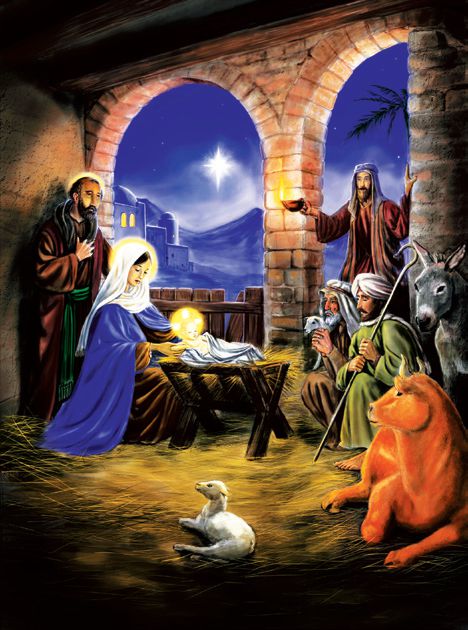
The culmination is when the ‘innkeeper’ finally allows the expectant couple to board in the manger. “That is when we break open the piñata, which is filled with fruits and candy for the children,” he said. The Ambassador also noted that Mexican homes tend to get a little crowded during the season. “We have the Nativity scene, we have the piñata, and we also have the Christmas tree. The last one was something that the French brought over when they invaded in 1860. They left after our revolution, but the tree stayed,” he concluded jocularly.
Unsurprisingly, food plays a major part in Mexican Christmas celebrations, and one source of pride for Ambassador Lozoya is how Mexico has contributed to Christmas feasts the world over. “Not many people may know that the turkey and chocolate were introduced to the rest of the world from Mexico,” he revealed.
“This is because when the Spanish led by Cortes invaded, they took the bird and the cocoa bean back to Spain and they later spread throughout Europe. So when you eat your Christmas turkey or drink your hot chocolate, you are tasting two of Mexico’s most famous and delicious exports,” he said with pride.
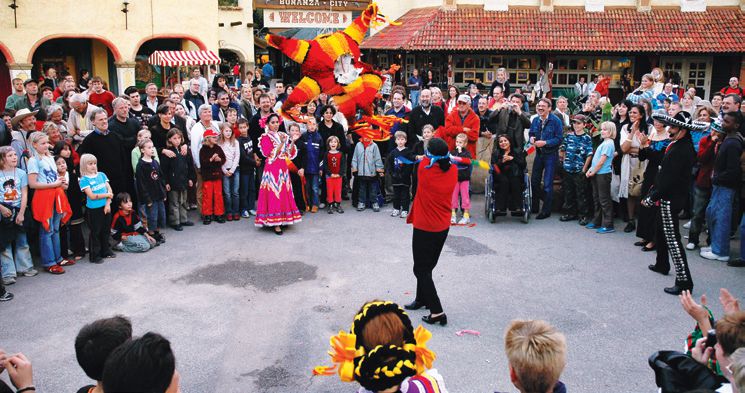
A Homecoming Celebration | H.E. Samori Angwa Okwiya, High Commisioner of Kenya
“I remember when we were kids my parents used to take us for Christmas shopping around early October when the price of clothes and goods are still relatively low during those months.”
In a country with over 40 different tribes, celebrating Christmas is one of the things the people of Kenya have in common. According to Kenyan High Commissioner, H.E. Samori Angwa Okwiya, preparations for the festival normally begin ahead of time. “I remember when we were kids my parents used to take us for Christmas shopping around early October when the price of clothes and goods are still relatively low during those months,” he said.
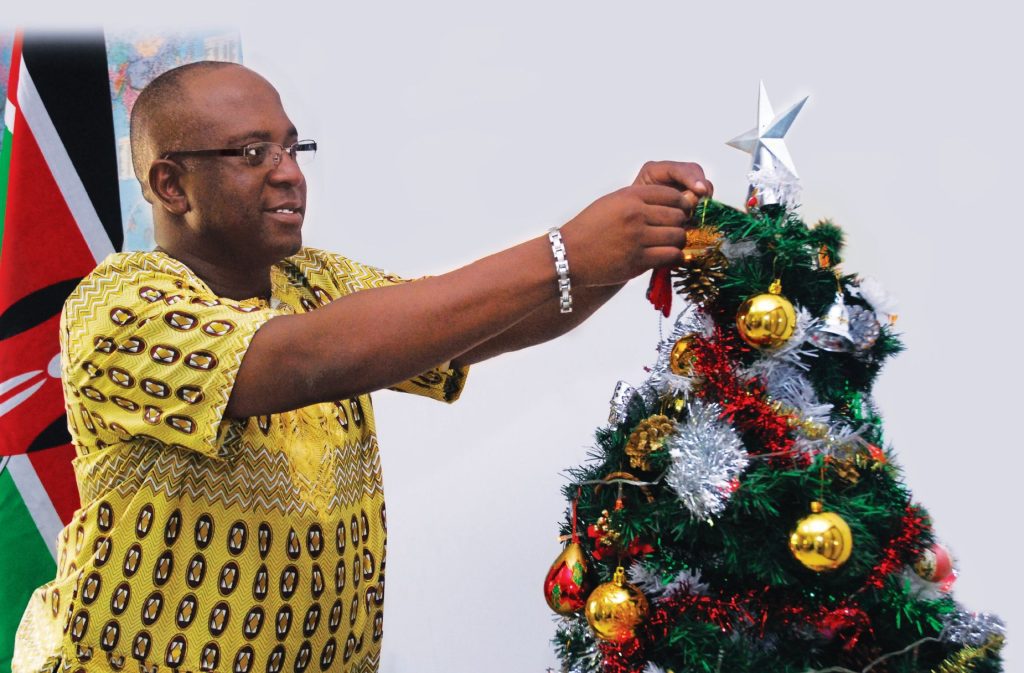
During Christmas season, life in the cities slows down as people head back to their home towns for a family reunion at their rural homes. High Commissioner Okwiya explains that the Swahili word for the rural homes is Ushago, or simply shagz as it is commonly called among the younger generation.
“There is a mass exodus from the cities on the few days before Christmas itself. Flights, trains and public transportations are packed and hotels are fully booked up until the New Year. Tickets must be bought more than a month in advance because they are expected to be sold out early and rates will go up, too. So, there is a lot of planning ahead if one wants to make it back to ushago in time,” said High Commissioner Okwiya, describing the hectic period leading up to Christmas.
The festivities itself, he revealed, have two distinct scenarios. On one hand, Christmas carries great religious significance for the fact that 70 to 80% of Kenyans are Christians. There will be rehearsals of carols, hymns and Nativity plays in churches throughout the country where most of the participants are school children. This is in preparation for the midnight Mass on Christmas Eve.
On another hand, there is a more indigenous part of the celebration whereby all extended member of the family gather at ushago for a week of partying. During the occasion, it is customary for the head of the household to sponsor an animal for ritual slaughter, which will then be cooked and served as part of the Christmas reunion dinner to honour other visitors who arrive. The animal chosen will depend on the specific beliefs and preferences of a tribe. “Where I come from, the chosen sacrificial animal is a rooster,” said High Commissioner Okwiya.
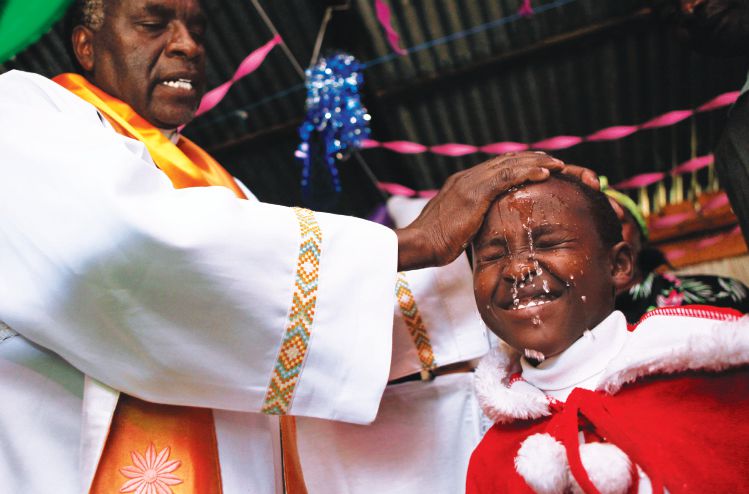
Christmas in Kenya is therefore both a time to observe religious and tribal customs as well as for families and friends to get together and enjoy each others’ company, festive foods and just celebrate.
A Festival with Diverse Heritage | H.E. Sergio Arruda, Ambassador of Brazil
“The children will knock on the doors of houses and they will be welcomed in to re-enact the Three Wise Men’s visit to Jesus. After the performance, they will be rewarded with sweet treats. The children will also be given additional food and gifts that will later be distributed to the less fortunate in the community. This goes on from the 25th of December to the 6th of January.”
As a country with rich cultural diversity, Christmas in Brazil contains influences from several backgrounds. As H.E. Sergio Arruda – the Ambassador of Brazil – told PASSIONS, while most customs can be traced back to Portugal, who brought the festival to Brazil in the 16th century when Catholic Portuguese sailors landed in his homeland, there are also elements of African culture owing to the large number of Brazilians with African heritage.
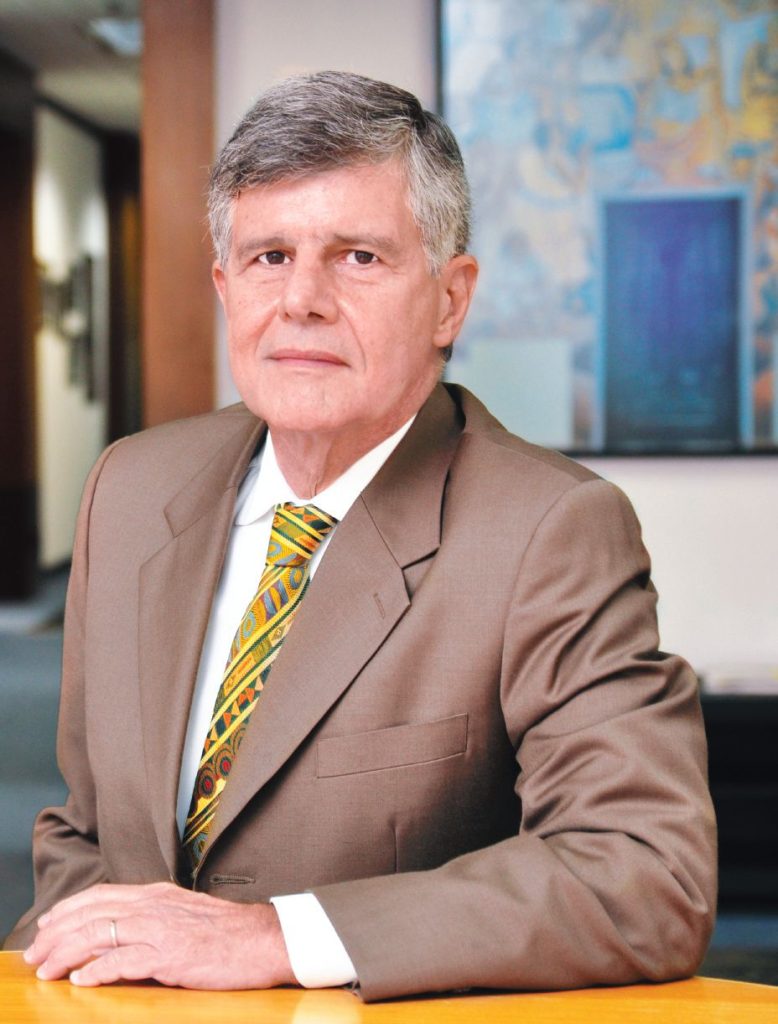
Describing the Christmas festivities in Brazil, the Ambassador revealed that, “During the season, Christmas songs such as Noite Feliz, which is the Portuguese version of Silent Night, will be playing everywhere, and people will set up brightly decorated Christmas trees. Another tradition is to eat panettone, which are festive cakes made with dried fruits that were brought over by Italian immigrants.”
Perhaps the most visible symbol of the Portuguese influence is the celebration of Folia de Reis – or Three Kings Day. “Even today, a lot of Portuguese-speaking countries like Brazil observe Folia de Reis,” Arruda explained, “… where there will be a colourful procession of people who will make their way through the countryside to honour the birth of Jesus, while accompanied by music.”
Being a large country with an equally huge population, Folia de Reis celebrations do vary from region to region. “For example, in smaller cities, the celebration is known as Pastorinhas, which means ‘Little Shepherds’,” the Ambassador told us, “and many Brazilian households would assemble Nativity scenes, in anticipation of a visit by school children dressed-up as angels, shepherds and other characters.”
“The children will knock on the doors of houses and they will be welcomed in to re-enact the Three Wise Men’s visit to Jesus. After the performance, they will be rewarded with sweet treats. The children will also be given additional food and gifts that will later be distributed to the less fortunate in the community. This goes on from the 25th of December to the 6th of January,” he said.
Perhaps the most varied aspect of the Brazilian Christmas is the supper served after the Midnight Mass. Ambassador Arruda described the supper as a feast consisting of dishes that can be identified in various European traditions such as turkey, chicken, vegetable salads, dried fruits and lots of mouth-watering desserts. There is, however, one particular that held a special place among his countrymen, the salted cod. “This popular dish dates back to the colonial days, during the 17th century when cod was only made available to the locals by Portuguese settlers during the festive season,” he explained.
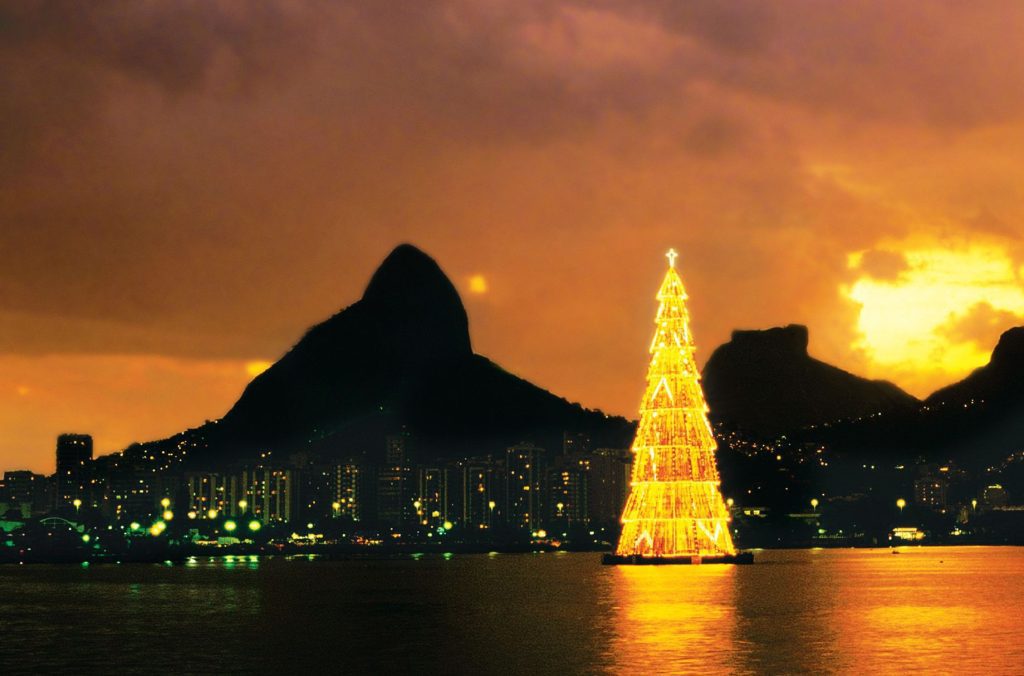
Because the harmonious merging of various heritages in Brazil is such a cherished aspect of his home country, the festive season brings out strong feelings of nostalgia for Ambassador Arruda. “As a diplomat, most of my time is spent abroad and that takes me away from family and friends back in my home country,” he said. “However, I also look forward to celebrating Christmas with newfound friends each year and discovering different countries with cultures as diverse as Brazil – like Malaysia,” he added with a smile.
Not Forgetting the ‘Christ’ in Christmas | H.E. J. Eduardo Malaya, Ambassador of the Philippines
“What we don’t want lose is the true spirit of Christmas, which is the birth of Jesus Christ. One should not forget that.”
In the Philippines, Christmas starts as early as September each year. “We probably have the longest Christmas preparation in anywhere,” mused H.E. J. Eduardo Malaya – Ambassador of the Philippines to Malaysia. “It is not unusual to hear an occasional Christmas song in the radio at the start of September and the festive mood would really pick up after Halloween where everybody will be putting up decorations. The ubiquitously unique thing (in the Philippines) would be to hang a parol,” he added.
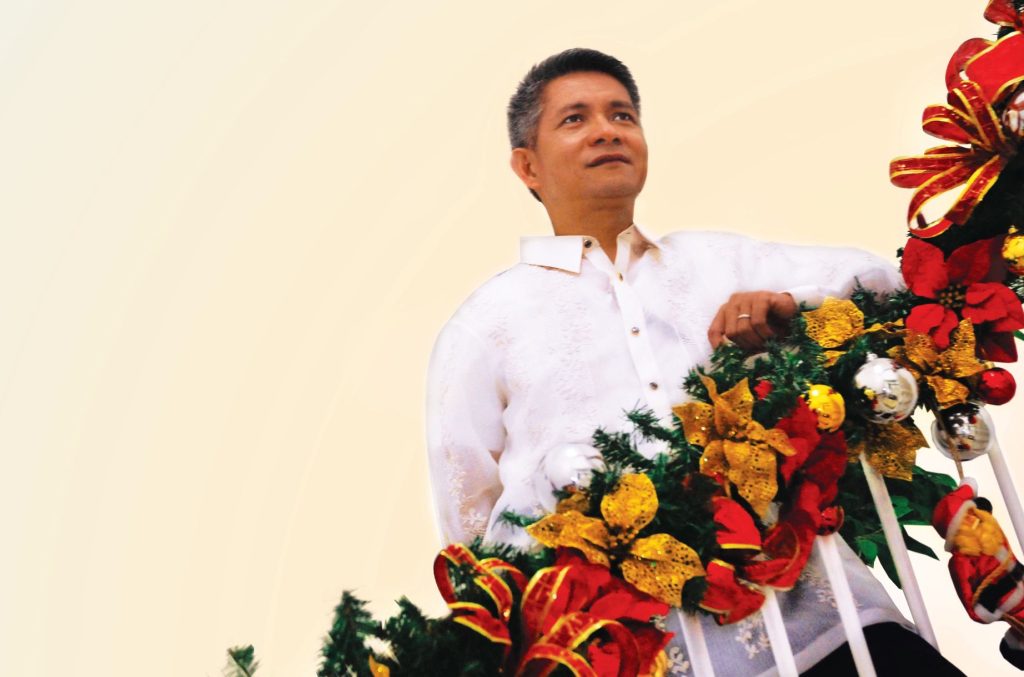
He went on to explain that a parol is an ornamental star-shaped Christmas lantern made of bamboo and paper that comes in a variety of size and colours. Symbolising the triumph of light over darkness, Parols can be seen hanging on trees, in front of houses and decorating streets and often public places. There are also parol-making contest held around the country.
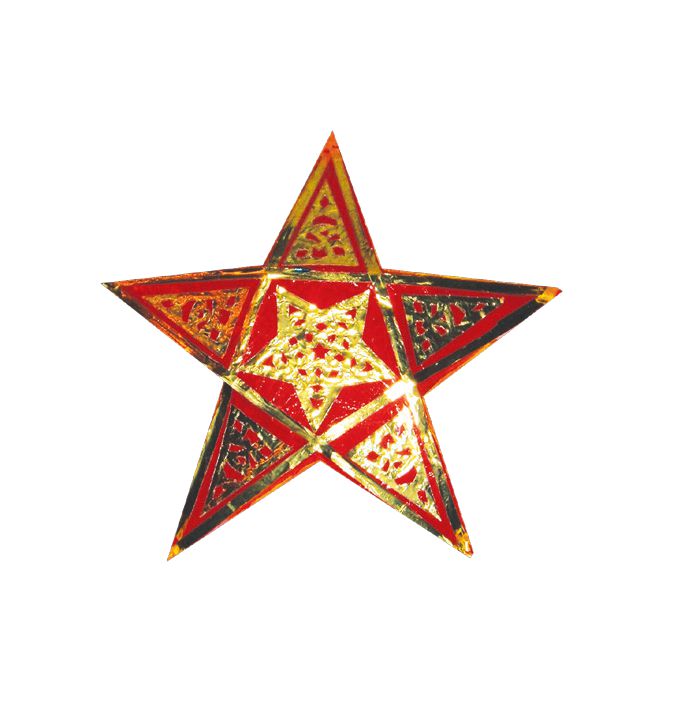
For the nine days leading up to Christmas, churches nationwide will hold simbang gabi, the early dawn mass. Simbang gabi begins in the early hours of the morning, around 3am to 4am. After the one hour long prayers, attendees, particularly the children, look forward to enjoying rice cakes called puto bumbong that will be on sale at church sites.
Speaking passionately about the festive aspect of Christmas, Ambassador Malaya takes the real meaning and the spiritual part of the holiday to heart, “One thing I make sure of in all my communication is that I don’t write ‘X’mas’ as a contraction for Christmas, because it has to be done properly,” Ambassador Malaya said. “What we don’t want to have is to lose true spirit of Christmas, which is the birth of Jesus Christ. One should not forget that,” he reminded.
Asked what celebrating Christmas means to him on a personal level, Ambassador Malaya humbly replied, “Basically Christmas is for children,” Referring to the practice of giving out presents under the Christmas tree, he said, “It’s the innocence of believing in good so they will be rewarded. I always look forward in their smiles; the joy my kids feel when they open their presents on Christmas morning.”
At the Crossroads of Europe | H.E. Zeljko Bosnjak, Ambassador of Croatia
Few countries can boast to have Christmas traditions as varied as Croatia’s, as its strategic location off the coast of the Adriatic sea, had resulted in it coming under the influence of the Austrians, Hungarians, Italians and Turks at some point in its history. For H.E. Zeljko Bosnjak – the Ambassador of Croatia to Malaysia – this has only helped enrich the way the holiday is celebrated in his homeland.
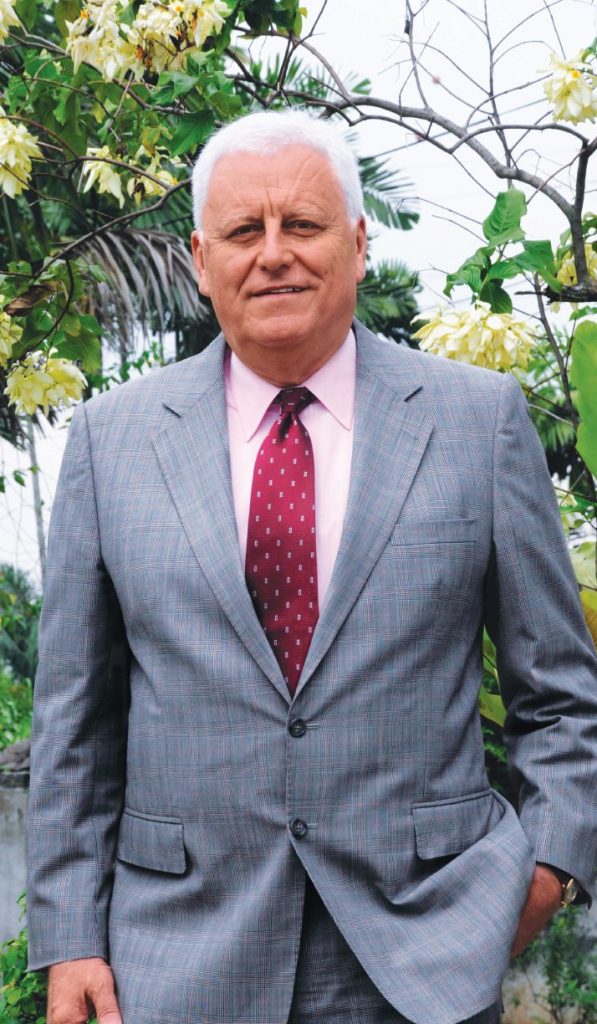
Looking back at his childhood, the Ambassador noted that when he was growing up, Croatia did not exist as an independent nation. Instead, there was Yugoslavia – an officially socialist state – which unlike other socialist countries in Eastern Europe, did not suppress the celebration of Christmas. Although, as the Ambassador noted, since the fall of Communism and the break-up of Yugoslavia, Christmas and other religious holidays have become official holidays in the calendar.
While those in North America and Western Europe, associate Christmas with turkey, for Ambassador Bosjnak, the true Christmas aroma is the intensive odour of bakalar or dried and salted codfish. “For me, it is the smell of Christmas, as we eat it on Christmas Eve as part of a very light meal. Of course some people do not like the smell, but I love it and it is something I look forward to the whole year,” he smiled.
While Christmas Eve dinner is light, Christmas lunch is when the feasting truly takes place. The Ambassador revealed that although turkey is commonly found on Croatian Christmas tables, there are other more indigenous meat dishes as well as “orehnjaca and makovnjaca – walnut roll and poppy seed cake respectively. Basically, the whole table is filled with food. And for Christmas we always leave an empty chair for anybody who might be dropping in, whether a family member, friend or even just someone tired and hungry,” the Ambassador said.
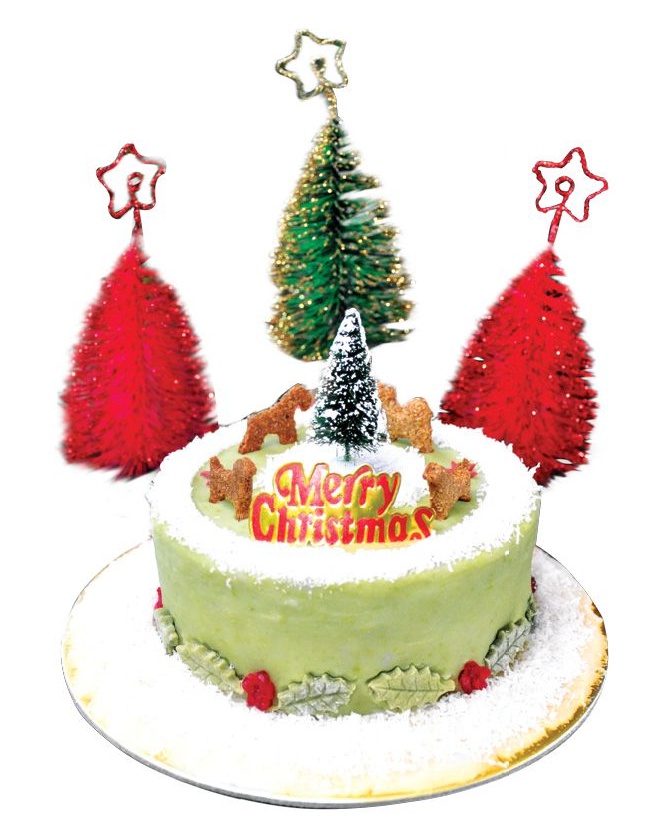
Interestingly, while Croatia is a mainly Roman Catholic nation, the Ambassador revealed that one tradition they share with their Orthodox Slavic cousins is the presence of Djed Mraz – a gift-giving figure similar to Ded Moroz (Grandfather Frost) in Russia. “However, we are also seeing an influx of commercialism, and now we have Santa Claus coming in to compete with Grandfather Frost,” Ambassador Bosjnak laughed.
At the end of the day, Ambassador Bosjnak believes that Christmas is a time for reflection and giving. “It’s a religious tradition, and like many other places, it’s a time for the family and close friends. Even those who live abroad, it’s a time for giving with an open heart and sharing,” he noted sagely.
Summertime Yuletide | H.E. Maria Isabel Rendon, the Ambassador of Argentina
While the popular Christmas song may talk about dreaming of a white Christmas, it is not so in the homeland of H.E. Maria Isabel Rendon – the Ambassador of Argentina – as Yule falls during the summer months there. “During Christmas, we will all be outside and enjoying the sun and the warmth. Of course, I’ve also heard guests from Europe and US say that it does not feel like Christmas in Argentina because there is no snow,” she laughed.
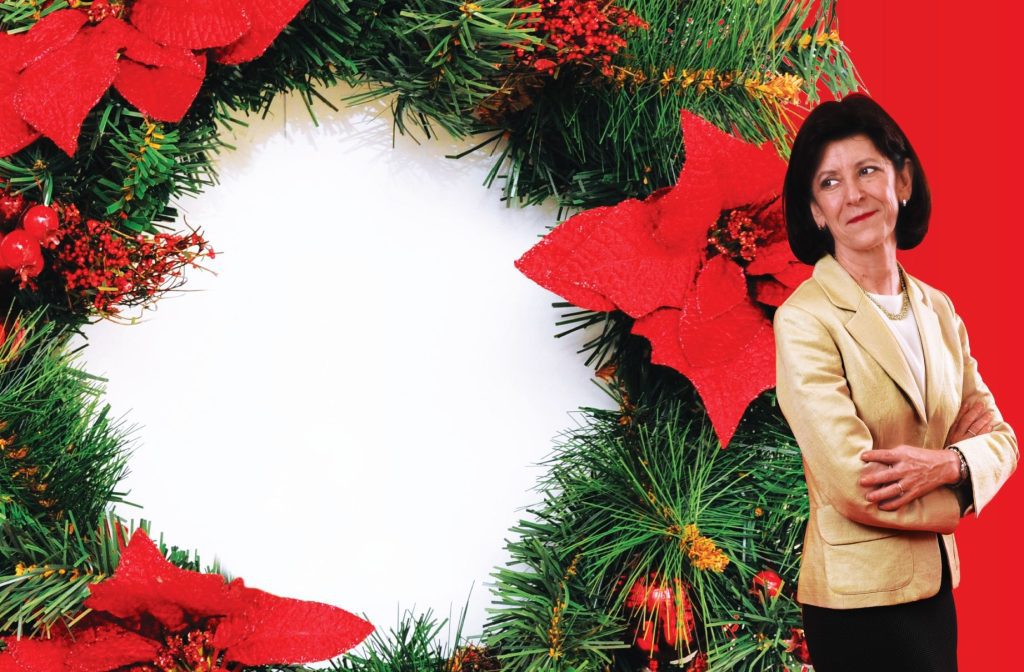
Snow or no snow, some traditions are the same no matter which hemisphere one is from. For instance, as the Ambassador revealed, it is normal for homes to have a Christmas tree, and shopping malls will usually have one particularly extravagantly decorated tree as the centre of attention. And of course, Christmas is also a time that children look forward to the most.
Perhaps more so in Argentina, because as the Ambassador explained, “We have Papa Noel – who is like Santa Claus – and children usually get two gifts. One during Christmas Eve, and another on ‘The Day of the Three Kings’, which falls on12 days after Christmas and is held to commemorate the visit by the three wise men to baby Jesus. The day also marks the last day of Christmas.”
Family is also a vital component of Christmas celebrations in Argentina and as the Ambassador pointed out, “We can welcome New Year with friends, but we will always be with our family during Christmas.” While her immediate family is small, Ambassador Rendon makes it a point to return to her home city of Posadas – approximately 1,300km north of Buenos Aires – to celebrate with her mother and brother’s family.
Christmas in Argentina has also remained very much a religious festival. “We are mostly Catholics, so the run-up to Christmas usually starts four weeks before with the start of Advent,” the Ambassador revealed. “Each Sunday, before Christmas and on Christmas Day itself, we will light a candle. Also on Christmas Eve, most people will go for Mass in the evening before having their Christmas dinner.”
While many things may be on the dining table, the two must-haves – as the Ambassador pointed out – are pan dulce (sweet bread) and apple cider, which is used to toast “Feliz Navidad” at midnight. Such is their importance that some well-off people will distribute the bread and cider to poorer families, so that they can celebrate Christmas. And that, perhaps, is a clear example of the sharing of Christmas joy.
A Family-Oriented Festival | H.E. Simon Featherstone, High Commissioner of the United Kingdom
For H.E. Simon Featherstone, the UK’s High Commissioner to Malaysia, Christmas in his home country is a kaleidescope of different sights, sounds and smells. “Christmas lights will appear in the shops and on a massive tree in Trafalgar Square several weeks before the 25th of December. The smell of mulled wine and roast chestnuts permeates the air. Offices organise Christmas parties. Carollers can be heard in the main railway stations collecting money for deserving charities. The shops are full to bursting with people buying gifts,” he says.
On a more personal level for High Commissioner Featherstone, Christmas is commonly associated with family gatherings. “Christmas is a very special time, especially when one has young children who get very excited about what Father Christmas might bring them on Christmas Eve,” he says.
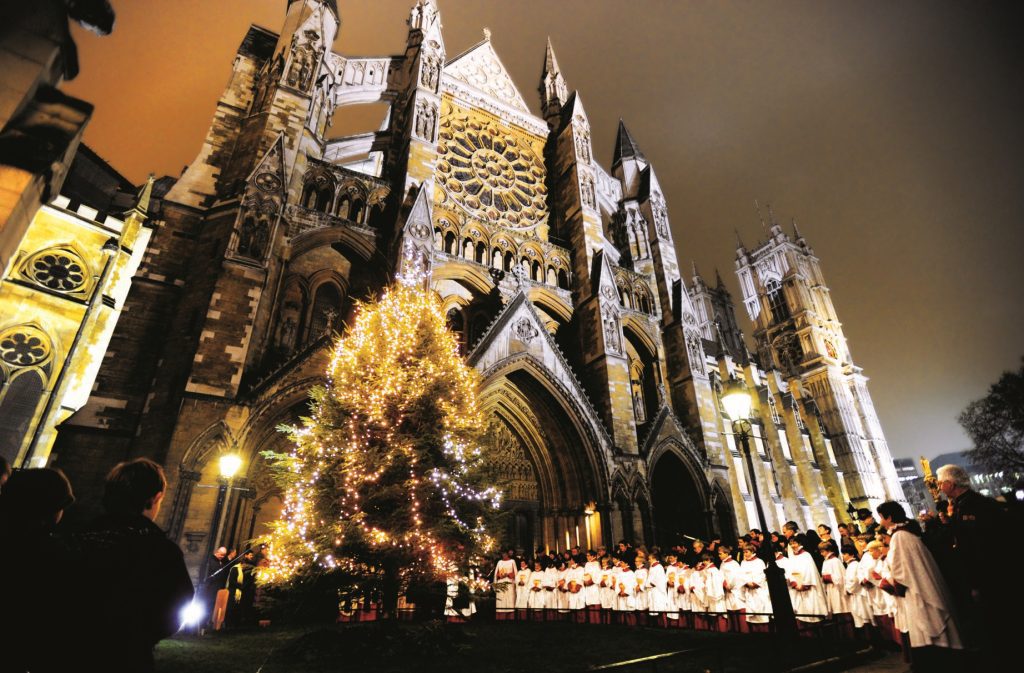
Father Christmas, for children in England, is a Santa Claus-like figure clad in a long red and green robe who is said to leave presents for children in stockings or pillowcases that they hang at the end of their bed during Christmas Eve. These presents will not be opened until the afternoon of the next day.
The traditional Christmas meal in the UK is another aspect of the celebration High Commissioner Featherstone looks forward to each year. “On the first day of Christmas, most families get together for a big Christmas Day lunch which traditionally consists of roast turkey, potatoes, parsnips and Brussels sprouts together with all the trimmings of stuffing, cranberry and bread sauce. This is then followed by Christmas pudding and mince pies and plenty of wine. Supper if anyone can manage it is usually cold meats, salads, pickles and more wine,” he says.
He then adds, jokingly, “On the second day, known as Boxing Day, most people are feeling guilty about the amount they have eaten and try to walk off the effects!”


